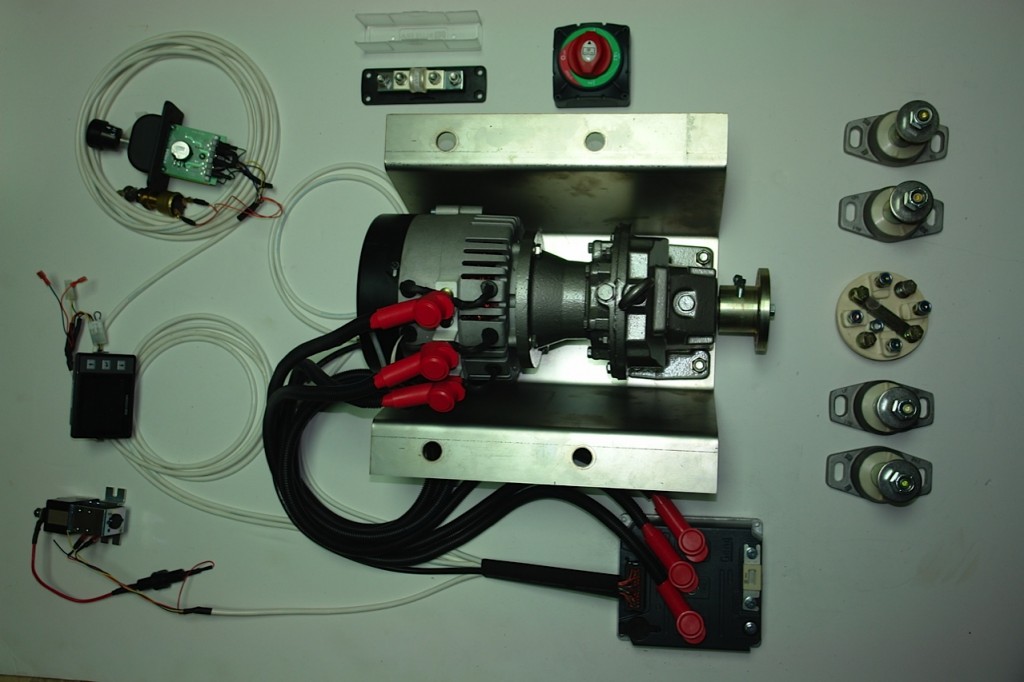

If you forget the charging business and use an on-board charger that you plug into AC power at the dock, then a 36 or 48 volt motor would move the boat but again, it would never get on plane. In otherwords, you would consume more electrical energy trying to charge the batteries than you have power available. So you see, that is a losing proposition all the way around. So that electric motor, which is sucking juice from the batteries like crazy to propel the boat needs to now suck more juice so it can power an alternator that CONSUMES more power than it GENERATES. That power comes from the electric motor. You see, getting power from an alternator means you need to put power into it. Now then, back to the alternator for charging.

You would need at least a 48 volt system and a "biiigggg" electric motor. First - electric power on a 20 foot 1700# boat requires not one battery but a boat load of them if you want to go very far. If you don't understand the concept, it takes power to generate power. “When we look forward, we see a lot more applications on the horizon,” Fayer concludes.Ummm - perpetual motion has not been invented yet. GM’s pontoon boat is an excellent example of an engineering marriage of the right hull and boating activity with the right electric propulsion to optimize boating fun.

Its propulsion systems are widely varied, well-proven in millions of highway miles, and many are ready to launch. After all, GM has been the primary provider of gasoline engine blocks to the marine industry for practically forever. In fact, Deutz, Europe’s answer to Caterpillar, recently acquired Torqeedo to share those technologies in its engine business.įor GM, migrating into electric marine propulsion is a natural. Torqeedo builds excellent motors but shines brightest in the genius of its electronic battery management systems that optimize battery power and mitigate safety concerns. Recall the cheap imported hoverboards that burst into flame? Or the expensive Samsung Galaxy phone that handed out hot pockets? So, manufacturers such as GM and Torqeedo spend millions in researching the best, safest battery management systems so trouble never happens. Poor battery management can lead to problems. Poorly engineered lithium batteries can be volatile too, burning fiercely if compromised in an impact or an eroded connection. General Motors will have 20 electric cars by 2023.

We think electric propulsion will grow and likewise become mainstream. As a result, most boats today have the better seakeeping abilities of wider, deeper transoms. By the time four-strokes left two-strokes in their wake, motor-makers had trimmed their weight back to the svelte numbers previously achievable only by two-strokes. Boat owners began to see the benefits of them, and boatbuilders began to build boats with wider, deeper transoms to carry them. Those liabilities were the antithesis to outboard engineering to that date, and though their heavy four-stroke valve train was cleaner, boats couldn’t carry it gracefully on their transom. Those new-age (back in the day) green machines began to gain traction in the early ’90s, even though they were slow and heavy. It’s a predictable process, inevitable in its approach, and it’s not unlike one boaters have already been through: the advent of the four-stroke outboard. But will electric power go mainstream? Over time, electric-motor makers like Torqeedo and Elco will ease into ideal applications, partnering with boatbuilders to create optimum hull designs that maximize the electric power.


 0 kommentar(er)
0 kommentar(er)
